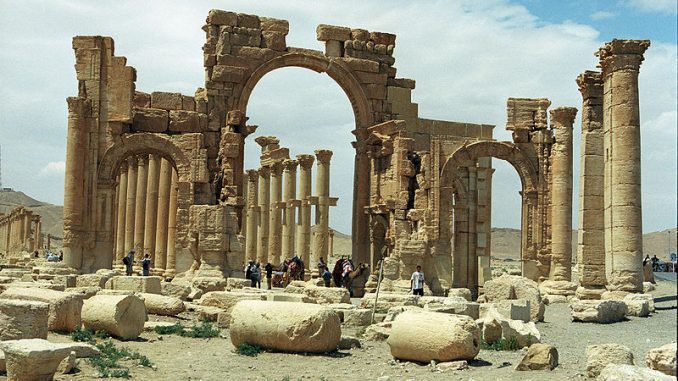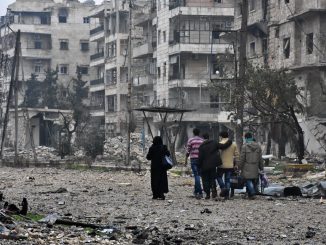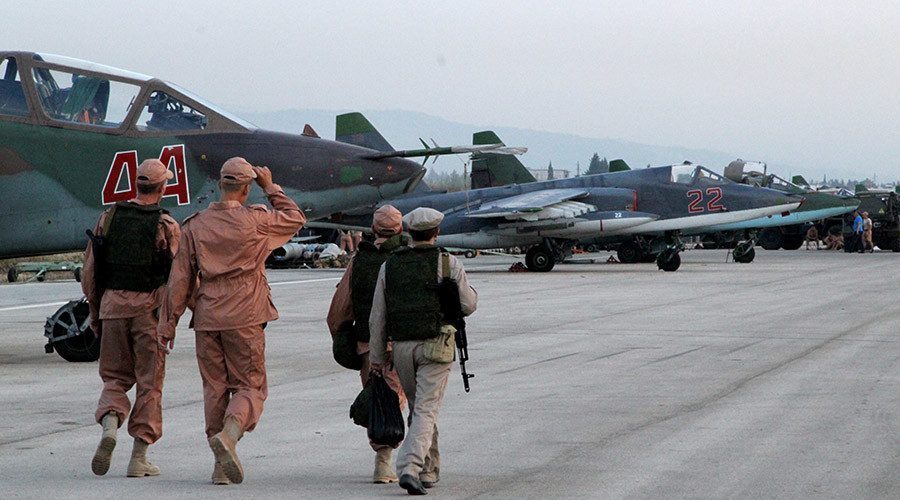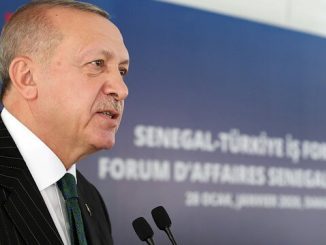
Assad regime said on Thursday its forces, backed by Russian air force, had recaptured the ancient city of Palmyra from Islamic State for the second time in a year, as ISIS fighters withdrew to the eastern parts of the city.
ISIS first captured Palmyra, once a Silk Road oasis that boasted some of the best-preserved ruins of antiquity, in May 2015.
Assad regime backed Russian forces reclaimed the city from Isis in March, only to lose it to a counter-offensive in December.
Regime forces launched last month a new offensive to recapture the city with the support of Russian air force.
Russian-backed Syrian troops pushed into a western neighborhood of the city late on Wednesday after fierce clashes with the ISIL fighters.
By Thursday morning, ISIS militants had withdrawn to residential neighborhoods in the east of the city, the UK-based Syrian Observatory for Human Rights said.
“IS withdrew from most of Palmyra after laying mines across the city. There are still suicide bombers left in the eastern neighborhoods,” Syrian Observatory head Rami Abdel Rahman told AFP news agency.
“Government forces have not yet been able to enter the heart of the city or the eastern parts.”
Bashar al-Jaafari, the head of the regime’s delegation to Syria talks in Geneva, said that the Russian support was essential in retrieving the city.
“The Russian allies are fighting with us hand in hand against the terrorist groups of Daesh. The residents of Palmyra will come back to it when it is cleared of mines and explosives,” Jaafari told reporters.
Once an archeological site, now destroyed ruins
Before ISIL entered the city in May 2015, the city boasted temples, colonnaded alleys, and elaborately decorated tombs that were among the best preserved classical monuments in the Middle East.
But the armed group launched a campaign of destruction of the city’s most famous monuments.
In addition, satellite imagery has shown that ISIS has demolished more monuments since it recaptured Palmyra from government forces in December.
Reports said that the militants have destroyed a tetrapylon and part of a Roman theatre in the ancient city of Palmyra.
Maamoun Abdulkarim, Syria’s antiquities chief, said on Friday that ISIL destroyed the tetrapylon – a 16-columned structure that marked one end of the ancient city’s colonnade, and part of the facade of the Roman theatre.
“we received satellite photographs from our colleagues at Boston University showing damage to the facade of the Roman amphitheater,” he told AFP news agency.
“This is a horror film and we will see more of it, as long as the city is under their control it will remain a hostage,” said Abdulkarim.
The attack is the latest in a campaign by Isis against the region’s heritage. The group has previously destroyed historic Assyrian sites in Iraq and other treasures in Palmyra.
During its previous spell in control of Palmyra, Islamic State destroyed other monuments there, including its 1,800-year-old monumental arch.
Syrian archaeologists had transferred many artifacts including about 400 statues to Damascus to prevent further destruction if Isis returned, but many reliefs and buildings remained at the site and were vulnerable to destruction.
in 2015, ISIS blew up the ancient temple of Baal Shamin. Baal Shamin was built in 17AD and it was expanded under the reign of Roman emperor Hadrian in 130AD.
Isis mined the ancient site in June before destroying the lion statue, a unique piece made of limestone that stood more than three meters high (10 feet) that stood outside a museum. Funerary busts were also destroyed.
The temple of Bel in Palmyra was also destroyed by ISIS in 2015. the Temple of Bel as Palmyra’s most important site and the most important temple in the Middle East alongside Baalbek in Lebanon.
ISIS militants publicly beheaded in 2015 the city’s 81-year-old head of antiquities, Khaled al-Assad, after he helped remove artifacts from the museum and refused to reveal the location of hidden treasures from the Unesco World Heritage Site.
The Syrian crisis began as a peaceful demonstration against the injustice in Syria. Assad regime used to fire power and violence against the civilians and led to armed resistance. 450.000 Syrians lost their lives in the past five years according to UN estimates, and more than 12 million have lost their homes.




